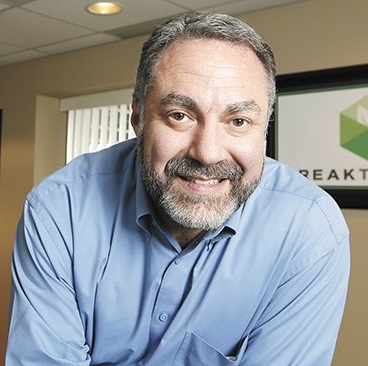 BIGNAI/SHUTTERSTOCK
BIGNAI/SHUTTERSTOCK
Ever heard of a state or county “independent living coordinator?”
I have and I’m fascinated by the near-mythical role they play as they guide youth through the trials of adolescence while facing the foster care labyrinth on their journey to adulthood. These child welfare professionals fill many roles in a teen’s life; coach, confidante, first responder, problem solver, spirit guide and, when disagreements arise, they might even be cast as the villain. They come to resemble, in many ways, extended family.
Technically, this relationship is designed to wrap up around age 23, but most independent living (IL) coordinators are compelled by their humanity, curiosity, affection or grave concern to pick up the phone — to call or answer — long after the legal foster care responsibility all falls away at age 21. These child welfare professionals fill many roles in a young person’s life; coach; confidante; disciplinarian; problem solver; spirit guide; and when disagreements arise, they might even be cast as the villain. They might reach out to congratulate you on your new job, your wedding, your graduation, to share a laugh or to offer condolences.

Christopher M. Patterson
When the pandemic struck, these calls took an ugly turn, because while the relationship lives on, the flexible “Chafee” funding at their disposal has a hard stop at 23. Naturally, youth needed cash and emergency housing resources during the economic shutdown, just like everyone else. By statute, eligibility for this aid ends at age 23. So as desperate calls for aid increased by the day, IL coordinators had only fruitless referrals and frustration to offer youth over age 23.
This is why I was relieved when I learned that Reps. Jackie Walorski, R-Ind., and Danny Davis, D-Ill., the authors of the Supporting Foster Youth & Families through the Pandemic Act (H.R. 7947), have heard of IL coordinators too. They not only know who these people are, they clearly respect the role that IL coordinators play in the lives of current and former foster youth. So much so that they intend to arm them with $350 million in emergency supplemental COVID-19 relief funding and the authority to get it into the hands of youth in need by Sept. 30. This is welcome news not just for alumni but for anyone who has been reading the heart-wrenching stories of depression and poverty disproportionately impacting former foster youth throughout the pandemic.
The emergency relief will be dispensed through the ultraflexible Independent Living Program (commonly referred to simply as “Chafee”) account to solve a variety of financial challenges caused by the protracted economic shutdown. As of the signing of Consolidated Appropriations Act of 2020 on Dec. 27, Congress offered IL coordinators the authority to offer immediate financial, housing, counseling, employment, education and “other appropriate support” needs of Chafee-eligible youth through age 26.
Resources held up for 2 years
It is not surprising that Reps. Walorski and Davis arrived at the most cost-effective and expedient solution because they serve on the Ways and Means Committee, which established the Independent Living Program in 1986. Congress doubled funding for the program twice — once in 1992 and again in 1999. It was in 1999 that the program was renamed to honor the late Sen. John H. Chafee, and why many advocates refer to this massive child welfare effort simply as “Chafee.”
I have this timeline committed to memory because it is personal to me. Abandoned as an infant, I was adopted at age 4 only to be returned and become a ward of the state at age 12. For years, I bounced from home to home. Children’s services finally found a stable, nurturing place for me with a Spokane, Washington, foster family, Ron and Carole Schultz. They cared for me and taught me about life on their farm for as long as they could.
In 1988 at age 18, like all foster youth at the time, I was abruptly untethered from the system that had raised me and everything I had come to know. It felt like I was staring off into the abyss. To avoid the abyss, I enrolled in Job Corps, where they sent me into the fire. Literally. I received enough training to earn a “Red Card” in time to battle the devastating Yellowstone fires of 1988. I wonder to this day what my life would have been like if I had had a different, less hasty emancipation.
Though the Independent Living Program had been written in 1985 and passed by Congress in 1986, the administration spent two years arguing with Congress in an effort to repeal the program. This must have been an extremely frustrating time for the Children’s Bureau staff. Nonetheless, the program instruction necessary to free up resources for older youth was delayed for nearly two years and so into the fire I went.
I also know this history well because like many of my fellow alumni, I have spent my entire adult life trying to make sure that youth get what they need to achieve self-sufficiency and independence in adulthood. I spent the last two years at the U.S. Department of Housing and Urban Development as the national lead on HUD’s new Foster Youth to Independence Initiative.
This brought me into conversation with hundreds of enterprising young people on their journey to adulthood and their IL coordinators. I hung on their every word and learned that IL coordinators nationwide are in contact with alumni who are struggling due to the pandemic. They are exhausting themselves to help when they can. They also keep running lists of their failures to make the case for raising the age of eligibility. They keep in constant contact with their Youth Advisory Boards to quantify the economic challenges accumulating among alumni.
It means everything that Reps. Walorski and Davis moved so swiftly to get resources to the professionals most qualified to distribute them directly to youth and alumni in need. These coordinators are the unsung heroes of the pandemic.
Christopher M. Patterson is president of Breakthrough and a former HUD Region IX administrator. He is also a former foster youth.





























